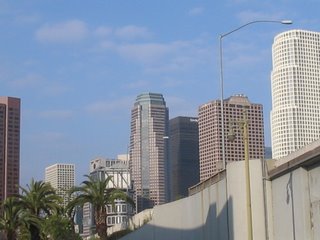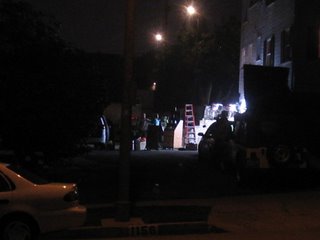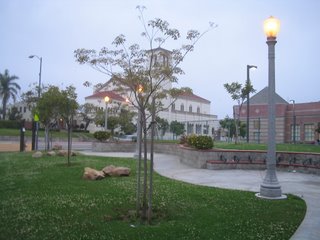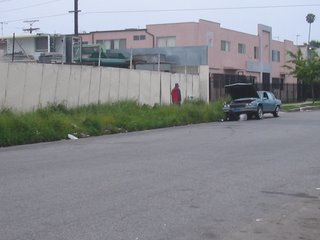Jane Powell is the proprietor of House Dressing, a business dedicated to renovating and preserving old homes, particularly bungalows. She is a frequent lecturer and consultant, and is the author of
Bungalow Kitchens,
Bungalow Bathrooms,
Linoleum,
Bungalow: The Ultimate Arts & Crafts Home, and
Bungalow Details: Exterior.
I spoke with Jane on Thursday.
1. Adam: What's new?
Jane: We're getting ready to release
Bungalow Details: Interior, in June. It's the biggest thing I've ever written, 95,000 words.
Adam: Are you still threatening to make this book your last?
Jane: It will be my last book--in 2006.
2. Adam: How many bungalows have you owned?
Jane: Nine, altogether I've owned eleven Arts & Crafts houses. My current home, "The Sunset House", is going to be featured in an upcoming issue of
American Bungalow magazine. The article is titled, "Embrace the Darkness."
Adam: Nowadays everybody wants everything awash in light. But I don't mind having a room or two--so long as the sightline isn't restricted--that are dark.
Jane: Or a whole house [laughs].
Adam: Why Arts & Crafts architecture?
Jane: I bought a bungalow first. If I'd bought a Spanish revival, who knows?
3. Adam: What would you like to do, that you haven't--yet.
Jane: A television show that spotlights true restoration. Not what passes for it on these bad old house makeover shows.
Adam: The ones that feature the so-called "sensitive" additions: kitchen or "great rooms" that are twice the size of the original house.
Jane: Exactly.
4. Adam: What ticks you off?
Jane: Replacement windows, but that's too easy. The term "smart growth". It's urban renewal in sheep's clothing. There's nothing smart about infill that isn't built to scale. There's nothing "smart" or "green" about demolition.
5. Adam: The Craftsman/Arts & Crafts style is so enduring, what do you think of these nuevo Craftsmans?
Jane: Three knee braces and a gable does not a Craftsman make. The majority of them get it wrong, whether it's the two car garage on the facade or the textured sheet rock inside. The window proportions are almost always wrong as well.
Adam: If you don't understand the philosophy, you'll screw up the aesthetics.
Jane: Yes, a cathedral ceiling in a Craftsman for example translates to: a lot of wasted space, poor efficacy. The opposite of what the movement was trying to advocate.
Adam: Thank you Jane, I'm looking forward to the new release.
Jane: You're welcome.
Labels: Interviews














